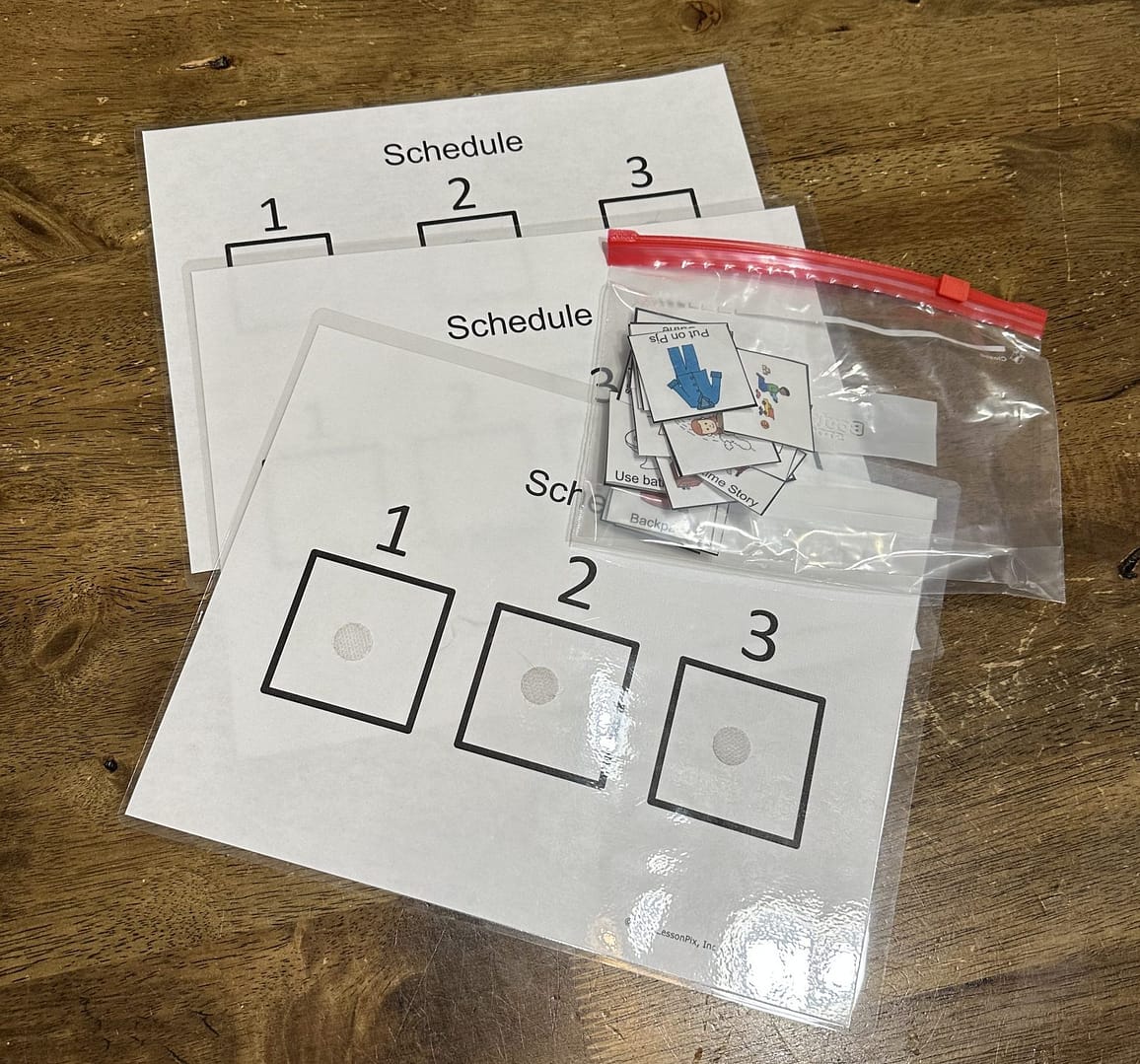The recent storms reminded me how challenging it can be to support children through major routine changes, like an unexpected school closure. Changes to routine, whether due to unexpected events, new places, or unfamiliar people, can be especially overwhelming for children who rely on predictability to feel secure. With some preparation and thoughtful strategies, you can make these transitions smoother.
Here are some strategies for helping children navigate big changes:
Give Your Child Advance Notice
When possible, give your child as much notice as you can about the upcoming change. Discuss what will be different and what will remain the same. For instance, if school is closed due to a storm, explain that they won’t be going to school that day but will likely return when the weather improves. Use simple, clear language that your child can easily understand. If the information feels overwhelming, break it down into smaller pieces over time
Use Visuals to Explain Changes
Visual supports can be powerful tools for helping children understand changes. Schedules, calendars, and social stories make abstract concepts more tangible. For instance, a calendar with pictures can show the day of the change and, if possible, when things will return to normal. Social stories are especially helpful as they can depict the entire experience in a relatable way, including details about what to expect, why the change is happening, and who will be involved. When creating a social story, use reassuring language, such as “It’s okay to feel unsure or nervous.” This can help validate their feelings and make them feel understood.
Incorporate Familiar Items
During transitions or changes, having familiar items on hand can offer a sense of comfort and security. Whether it’s a favorite stuffed animal, blanket, or sensory object, allowing your child to bring these items can help them feel more grounded. These objects serve as reminders of home and normalcy, providing reassurance when their environment or routine feels unfamiliar.
For bigger transitions, like moving to a new school or meeting new people, you could even create a “comfort bag” with their preferred items, sensory toys, or a comforting scent. Allow them to choose what goes in, giving them some control over their experience.
Practice New Routines
If the change involves a new location, activity, or people, practicing ahead of time can reduce anxiety and help your child feel prepared. For example, if they’re moving to a new school, try to arrange a visit so they can see the building, meet their teacher, and explore their classroom.
Offer Predictability Where Possible
When routines are disrupted, maintaining some predictability in other parts of their day can be very reassuring. Structure and routine create a sense of security, so try to keep regular mealtimes, bedtime, and other daily routines stable. Knowing that certain aspects of their day remain unchanged provides a sense of normalcy and control.
If the change disrupts a central part of their routine, like school or therapy sessions, consider adding alternative structure by creating a temporary schedule or plan for the day. This could include time for familiar activities like reading, art, or favorite games.
Use Calming Techniques
Calming techniques can be essential tools when children feel overwhelmed by change. Help your child practice self-regulation strategies, such as deep breathing, progressive muscle relaxation, or visualization exercises. If they have sensory needs, holding a weighted object, using noise-canceling headphones, or retreating to a quiet, calming space can also help.
It can be useful to create a “calm-down kit” filled with sensory toys, coloring pages, or other items they find soothing. Having a designated safe space or quiet area where they can retreat if they need a break can also give them a sense of control and security.
Prepare for Emotional Reactions
It’s normal for children to feel anxious, frustrated, or even fearful during transitions. Some children may experience increased meltdowns, regression in skills, or heightened anxiety as they process the change. Be patient, acknowledge their feelings, and provide verbal reassurance. Saying things like, “It’s okay to feel worried” or “I’m here with you, and we’ll get through this together” can be incredibly comforting. Giving them space to express their emotions, whether through words, drawing, or other forms of expression, helps them process their feelings in a constructive way.
Celebrate Small Successes
Recognizing even the smallest adaptations can help your child feel more capable and resilient. Whether it’s a small step like staying calm in a new place or trying a new activity, celebrate these efforts to show that they’re doing well. Positive reinforcement, whether through verbal praise, a sticker chart, or a small reward, can encourage them to keep building confidence and develop a growth mindset.
Stay Connected with Supportive Adults
Reach out to teachers, therapists, or other caregivers who are part of your child’s regular routine. When everyone involved is informed and working together, your child receives consistent support across environments. Teachers and therapists can reinforce the same strategies you’re using at home, providing a sense of stability for your child.
Keeping communication open with all caregivers allows for a smoother transition back to routines and ensures everyone has the tools they need to support your child effectively.
Supporting children through change requires sensitivity, patience, and flexibility. With these strategies, you can provide a strong foundation that makes it easier for them to manage changes and feel secure in their ability to handle new situations. Over time, they can develop greater resilience and adaptability, making each new experience a bit less overwhelming.
Love & Co. Therapeutic Interventions
referrals@loveandcompanytherapies.com
☎ 1 (941) 557-3881
☎ 1 (941) 264-8641
Follow us on Facebook and Instagram!
If you like our resources, please like and share our pages!

Leave a Reply